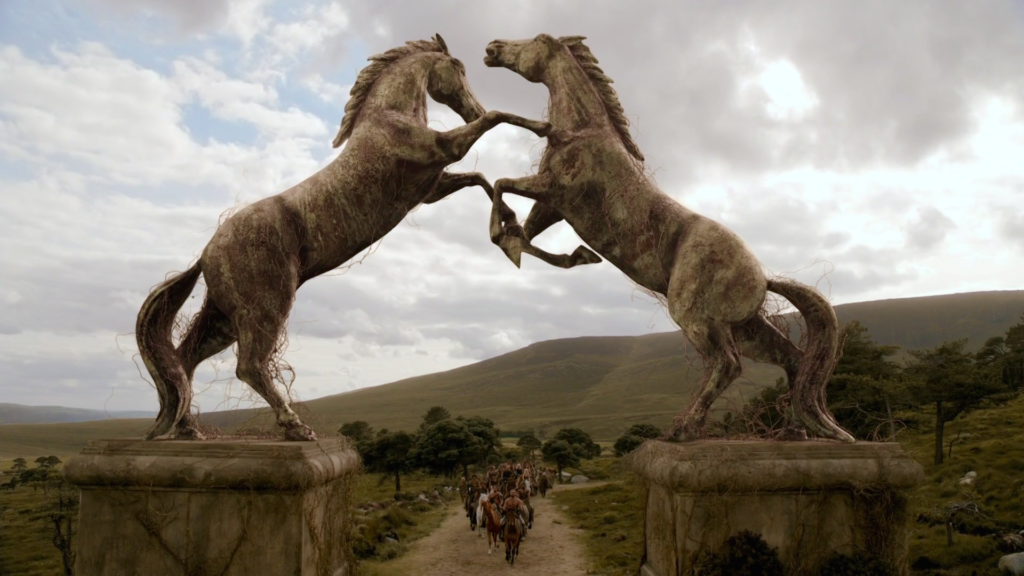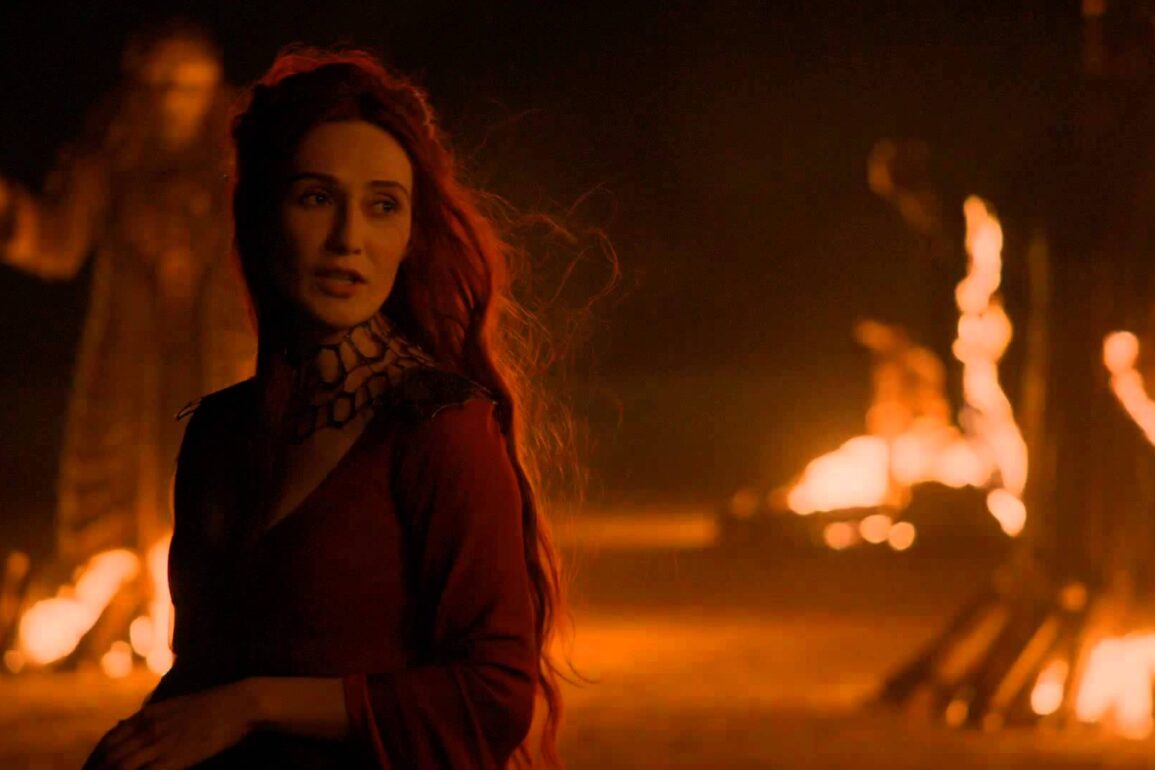The religions in Game of Thrones have been a significant factor in the development of the plot. The prejudice they cause and the magic they create have enthralled audiences – the religious and spiritual wars are just as important as the violent ones. Here’s a brief guide to every Game of Thrones religion for fans of the show, along with why these religions are significant. Brush up before the next season!
In Westeros

The Old Gods: The North
Worshipped by: The Starks and other Northern Houses.
About the religion: The Old Gods are believed to be infused with the natural elements, so there are no solid deities. The gods are believed to be spirits who can be visited in weirwood trees; their faces appear in the bark. They are worshipped by prayer. There are no temples, only small clumps of trees designated as the holy place. The Old Gods were initially worshipped by the Children of the Forest (a mystical race.) They form the oldest religion in Westeros. They were adopted by the First Men, from whom the Northerners believe they are descended. Above the Neck in Westeros, and beyond the Wall, they are worshipped.
Significance in the plot: The Old Gods have been around since Season 1. Some of the conflicts between the Starks and the Lannisters have been due to religious intolerance. The Old Gods are most seen while following Bran’s storyline – we see Bran becoming a warg and Jojen Reed having greensight. The Three-Eyed Crow, as well as the Children of the Forest, also fall vaguely under this domain.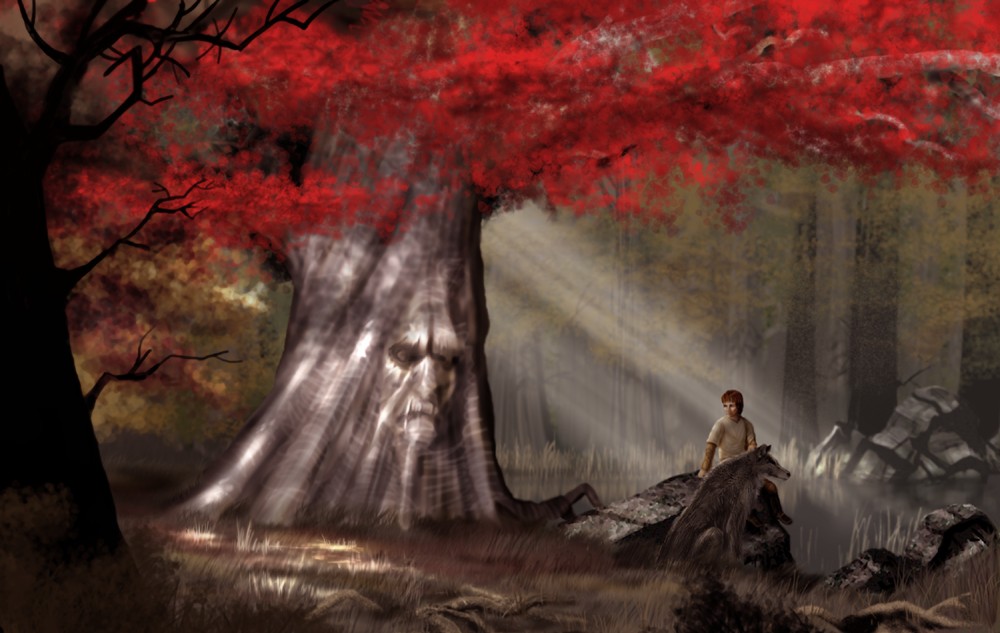
The Faith of the Seven: The South and West
Worshipped by: The Lannisters, the Tyrells, the Tullys, the Baratheons and most other Westerosi Houses (except a few Houses in Dorne).
About the religion: The Faith of the Seven is best compared to Christianity. It is an organised religion with widespread influence. It has designated places of worship and a clergy which is intent on protecting it. There are seven deities, who each represent certain qualities: the Father (justice), the Mother (mercy), the Maiden (purity), the Crone (wisdom), the Warrior (war), the Smith (hard work) and the Stranger (mystery). This religion has a holy book called the Seven-Pointed Star, much like a Bible. It distinguishes between sin and virtue and emulates a strong moral compass. The Faith of the Seven was brought to Westeros by the Andals, a race of men who warred with the First Men and created a rough divide between the South and the North.
Significance in the plot: Another religion which has been visible since Season 1, the Faith of the Seven has started becoming more prominent. With the religious tensions rising in King’s Landing along with the clergy’s rise in power and independence in passing judgment, the Seven gain more and more relevance in upcoming seasons.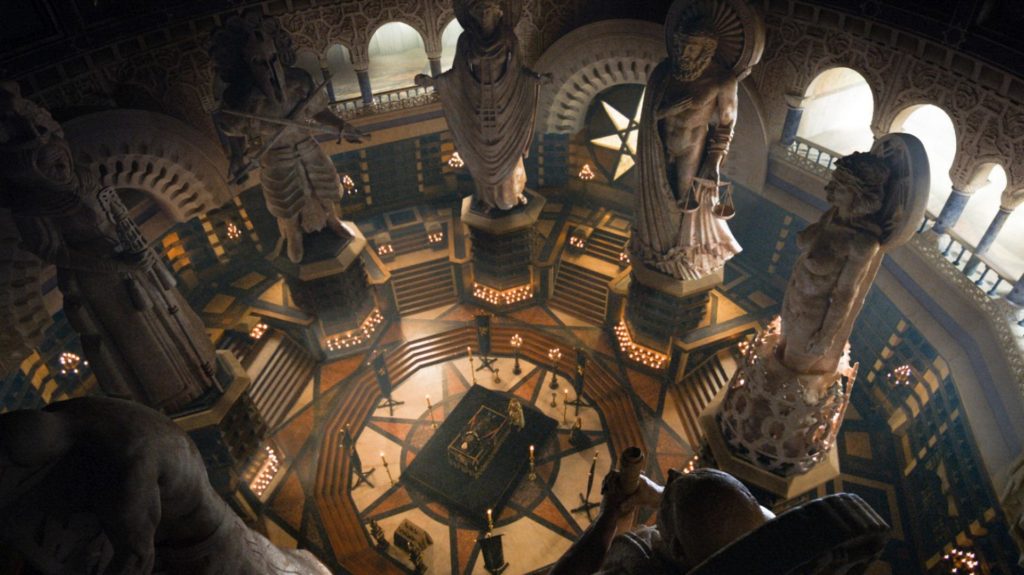
The Drowned God: The East
Worshipped by: The Greyjoys and other Ironborn Houses.
About the religion: The Ironborn worship the sea and the wrath and grace that comes with it. The Drowned God is an allegorical representation of the strength and belligerence which characterises the Ironborn. This religion promotes violence against the weak and hardcore exploration. Baptisms are like almost drowning.
Significance in the plot: As more and more Ironborn come into the picture following the death of Theon’s father, the power play among them also becomes prominent. With the search for a new Salt King and a movement for Yara Greyjoy, this religion is slowly gaining momentum.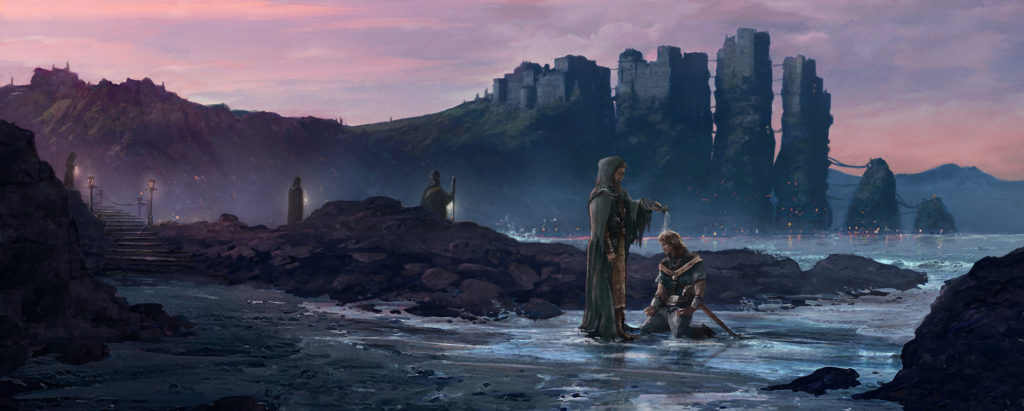
In Essos
The map in Game of Thrones extends beyond Westeros, but the plot spreads thin here too. These religions have slowly crept into the story, making Game of Thrones deeper, more cultural and so much more engaging (and confusing!).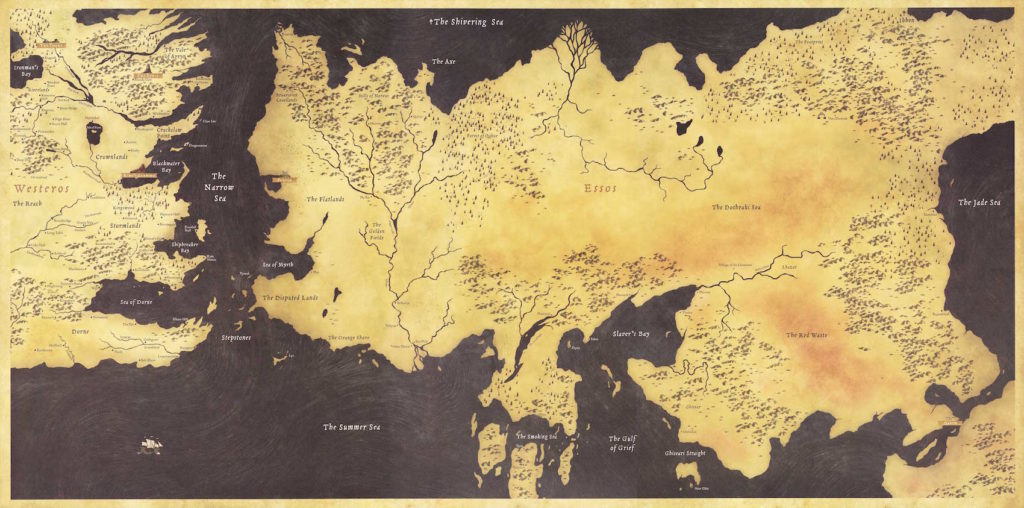
The Lord of the Light: The Free Cities
Worshipped by: Stannis Baratheon, Slaver’s Bay cities (Meereen, Astapor, Yunkai), Volantis, Qohor etc.
About the religion: The Lord of the Light is also known as R’hllor. This religion has a firm divide between the light and the dark – but not necessarily the good and the bad. The Lord of the Light is worshipped by Red Priests. He is often prayed to any form of sacrifice which requires burning. Quite a ruthless religion, it grants its priests the ability to prophesise, kill, and play tricks with the dark and the light.
Significance in the plot: There are two minor and one major situation with this religion. Melisandre comes to us as the Red Priestess with a weird and quite frankly, terrifying background. Initially playing by Stannis, we now see her with Jon Snow and the question of powerful figure chosen by R’hllor to take the reins. The other situation is with Daenerys, where another Priest believes that she is the chosen one. And lastly, of course, is the arc of Beric Dondarrion and his band of rebels in the Riverlands of Westeros. (And hopefully, Lady Stoneheart shows up soon?)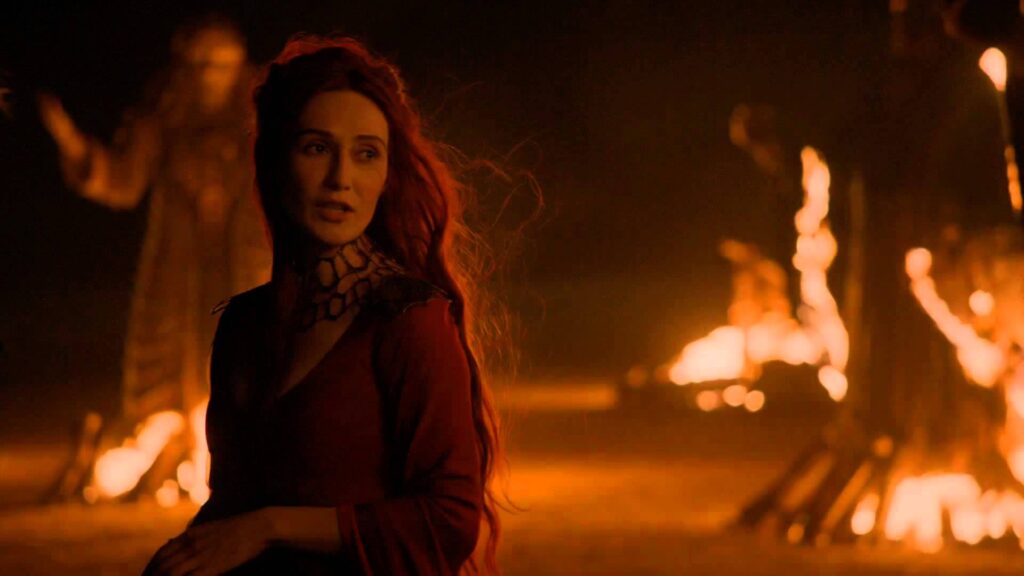
The Many-Faced God: Braavos
Worshipped by: The Faceless Men
About the religion: The Many-Faced God’s religion is one which is almost cult-like, with a small but powerful group of followers who undergo extensive training. Not much is known about this religion but for the fact that it trains assassins. It also becomes a sort of umbrella for all other religions found in the Game of Thrones universe.
Significance in the plot: Majorly seen through Arya’s story arc, this religion made a brief appearance in Season 2 and was followed significantly through Season 6. Its most important contribution is in the form of training Arya and her character development.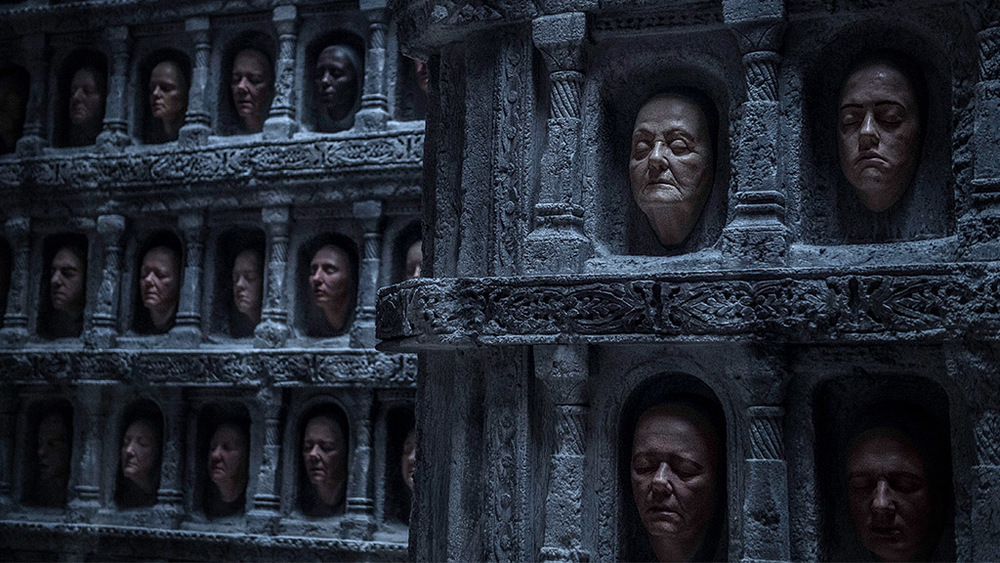
The Great Stallion: The Dothraki Sea
Worshipped by: The Dothraki
About the religion: Possibly the most tribal religion, this religion too is fused with nature and natural elements. The Dothraki, who are most linked to their horses and their dynamic settlements follow the Great Stallion. There is believed to be a Stallion Who Mounts the World who will unite the Dothraki into one people.
Significance in the plot: Championed through Season 1 and briefly used through a few other episodes, the Dothraki religion is mostly seen through Daenerys. It pushed her character forth in the beginning, developing her into the strong, badass, dragon-riding woman she is today.